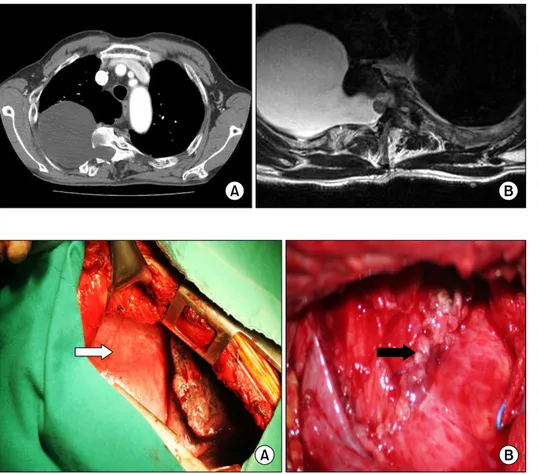Korean J Thorac Cardiovasc Surg 2011;44:383-386 □ Case Report □ http://dx.doi.org/10.5090/kjtcs.2011.44.5.383 ISSN: 2233-601X (Print) ISSN: 2093-6516 (Online)
− 383 −
*Department of Thoracic and Cardiovascular Surgery, Konyang University Hospital Received: October 1, 2010, Revised: July 4, 2011, Accepted: August 16, 2011
Corresponding author: Hyun-Min Cho, Department of Thoracic and Cardiovascular Surgery, Konyang University Hospital, 685, Gasuwon-dong, Seo-gu, Daejeon 302-801, Korea
(Tel) 82-42-600-9150 (Fax) 82-42-600-9090 (E-mail) csking1@konyang.ac.kr
C
The Korean Society for Thoracic and Cardiovascular Surgery. 2011. All right reserved.
CC
